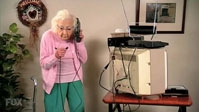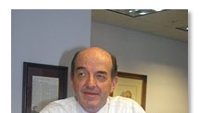After a soft test, the DTV transition is ready for completion

With the mandated transition to digital television and the giveback of the analog spectrum set for next week, it appears that the staggered plan implemented by the Obama administration was a successful strategy. As of May 10, Nielsen estimated only 2.9 percent of the nation remained unready — down from the 6 percent only three months ago.
A coordinated nationwide soft test in 125 broadcast markets on May 21 led to an increase in the number of calls seeking assistance to the FCC’s national help line. In fact, it prompted a single-day record of 55,000 calls and is expected to reduce the number of last minute panic calls on June 12, the day the final plug is pulled on analog broadcasting. Up to this point soft tests have been conducted by individual stations in several TV markets with similar success.
Prior to the test, the FCC’s help line had received about 15,000 calls each day since May 1. At least one station in each of the top 30 broadcast markets participated in the exercise. During the test, affected viewers were directed to call the toll-free help line — 1-888-CALL-FCC — if they needed aid in preparing for the transition.
The FCC said the most common question — asked by 51 percent of the callers — was how to get the $40 coupons for the purchase of DTV converter boxes. Fifteen percent expressed concern about reception issues in their area, while 10 percent needed instructions about how to install a digital converter.
The Chicago media market generated the highest volume of calls — 1310 phoned in — followed by New York with 1277 calls and Dallas-Ft. Worth with 764 calls.
“This soft test did exactly what it was supposed to do,” said Acting FCC Chairman Michael Copps, who has supervised the final weeks of the transition. “It was a wake-up call for consumers who are unprepared, alerting them to the fact that they need to take the necessary steps before the June 12 transition.”
The soft test simulated what unprepared viewers would experience when the actual DTV transition occurs. Instead of completely cutting off the on-air analog signal, broadcasters interrupt the regular programming to viewers receiving analog signals during the test to warn them the interruption means they are not prepared for the transition.
Get the TV Tech Newsletter
The professional video industry's #1 source for news, trends and product and tech information. Sign up below.
Such on-air viewers — not those connected to a subscription TV service such as cable or satellite —must take immediate action to avoid a complete loss of service on June 12.
Nielsen last estimated that about 3.3 million households — 2.9 percent of U.S. households with TVs —remained unready for the transition as of May 10. However, that number is falling fast as the days approach the deadline.

In these last days, the FCC is offering a range of services, including the help line, informational Web sites, walk-in help centers, and transition events in some cities. Local volunteers are visiting the homes of many viewers offering free help in setting up their television receiver. So far, about 2500 free installations have been performed.
As of May 20, the National Telecommunications and Information Administration (NTIA) said 58,167,402 American households had requested coupons for DTV converter boxes, and 57,457,356 of those coupons had been mailed. Average daily orders for converters is increasing, with 71,887 alone last week. The agency has also now begun to accept replacement requests for coupons that originally had passed the 90-day expiration without being redeemed.
More than 30,000 electronics dealers are participating in the coupon program at more than 2000 locations. On-air viewers can apply for coupons online or call the 24-hour toll-free hotline at 1-888-388-2009. The backlog of requests has been eliminated as the coupons are now delivered in a matter of days.
The NTIA said there are 91 certified converter boxes, of which 55 can pass through analog signals, now available in retail stores. There are another 100 certified converter boxes, of which 58 can pass through analog signals, not yet available in retail stores. Each box costs about $40-$70.
Currently, 94 percent, or 1655, of the nation’s 1759 full-power TV stations are broadcasting digital signals. The government estimates that 19.6 million households receive over-the-air signals exclusively in their homes. Another 14.9 million households have secondary over-the-air TV sets in their bedrooms or kitchens. About 70 million TV sets are at risk of losing their analog signals on June 12.
Demographics of households that get TV reception exclusively over the air are broken down this way: 27.5 percent African American, 31.8 percent Hispanic and 41.5 percent Spanish-speaking homes. Their options are to purchase a converter box, buy a new TV with a digital tuner, or subscribe to a pay-television service. Over-the-air reception also depends on the installation of a good antenna, something many buyers of converter boxes are learning after their purchase.
